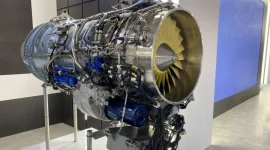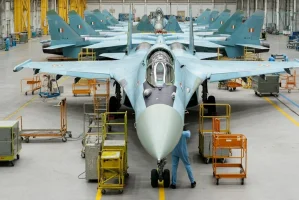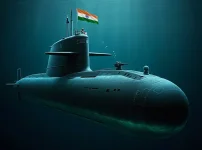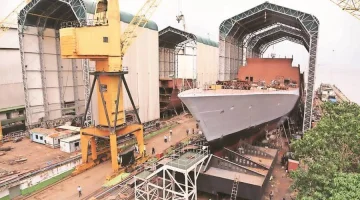- Views: 3K
- Replies: 6
Hindustan Aeronautics Limited (HAL), India's state-owned aerospace and defence company, has formally expressed its readiness to deepen its long-standing partnership with Russia by collaborating on new, advanced military aircraft.
Citing a successful history of joint projects, a company representative confirmed that HAL is prepared to extend its manufacturing legacy to include next-generation platforms, potentially including Russia's Su-57 stealth fighter.
This announcement comes as the Indian Air Force (IAF) urgently seeks to modernise its fleet and address a significant shortfall in its number of fighter squadrons. The IAF's sanctioned strength is 42 squadrons, but it currently operates with only around 31, creating a critical capability gap.
Against this backdrop, discussions about manufacturing the advanced Su-57 in India are gaining momentum, merging Russian design expertise with India's growing industrial and manufacturing capabilities.
A Decades-Long Defence Partnership
The foundation of Indo-Russian aerospace cooperation was laid during the Cold War with the licensed production of the Mikoyan-Gurevich MiG-21, India’s first supersonic jet, at HAL facilities. This relationship evolved significantly in the late 1990s with the Su-30MKI program.More than just a Russian fighter, the Su-30MKI was a unique, customised aircraft for India, integrating a multinational suite of avionics and systems, including Israeli electronic warfare equipment and French-designed canards for enhanced manoeuvrability.
With over 270 jets delivered, the Su-30MKI fleet has become the backbone of the IAF’s combat force.
Currently, HAL's Nashik division is producing the final 15 Su-30MKI aircraft under a recent contract, with deliveries expected to be completed by 2026. This production line has achieved over 60% indigenisation.
Simultaneously, HAL is undertaking a massive ₹13,500 crore ($1.6 billion) project to upgrade the existing fleet to the "Super Sukhoi" standard. This comprehensive overhaul involves equipping the jets with advanced Indian-made 'Virupaksha' AESA radars, modern mission computers, and new electronic warfare systems, extending their operational life well into the 2040s.
The Su-57: A Potential Successor
With the Su-30MKI program maturing, attention is shifting to the future. Russia is actively promoting its fifth-generation Su-57 'Felon' stealth fighter as a candidate for the IAF's tender for 114 Multi-Role Fighter Aircraft (MRFA).The Su-57 is designed for air superiority and attack roles and incorporates key fifth-generation features like stealth technology, supercruise (the ability to fly at sustained supersonic speeds without using afterburners), and highly integrated avionics.
Recent high-level talks have reportedly explored a deal for up to 140 Su-57 jets, which would be assembled locally by HAL.
Russian experts have conducted feasibility studies suggesting that HAL’s existing Su-30MKI production lines in Nashik could be retooled for the Su-57 with minimal modifications, leveraging the established infrastructure and skilled workforce.
This potential collaboration is seen as mutually beneficial.
For India, it offers a pathway to acquiring a fifth-generation fighter that aligns with the Aatmanirbhar Bharat initiative and acts as a safeguard against potential delays in its own indigenous Advanced Medium Combat Aircraft (AMCA) program.
For Russia, a major export order would provide a crucial economic boost amidst ongoing Western sanctions.
However, significant challenges remain. A key point of negotiation is the extent of technology transfer (ToT), particularly for the Su-57’s powerful Saturn AL-41F1 engines, which are among the most sensitive technologies.
The success of this ambitious project will depend on bridging these gaps through continued dialogue within frameworks like the India-Russia Intergovernmental Commission on Military-Technical Cooperation.





